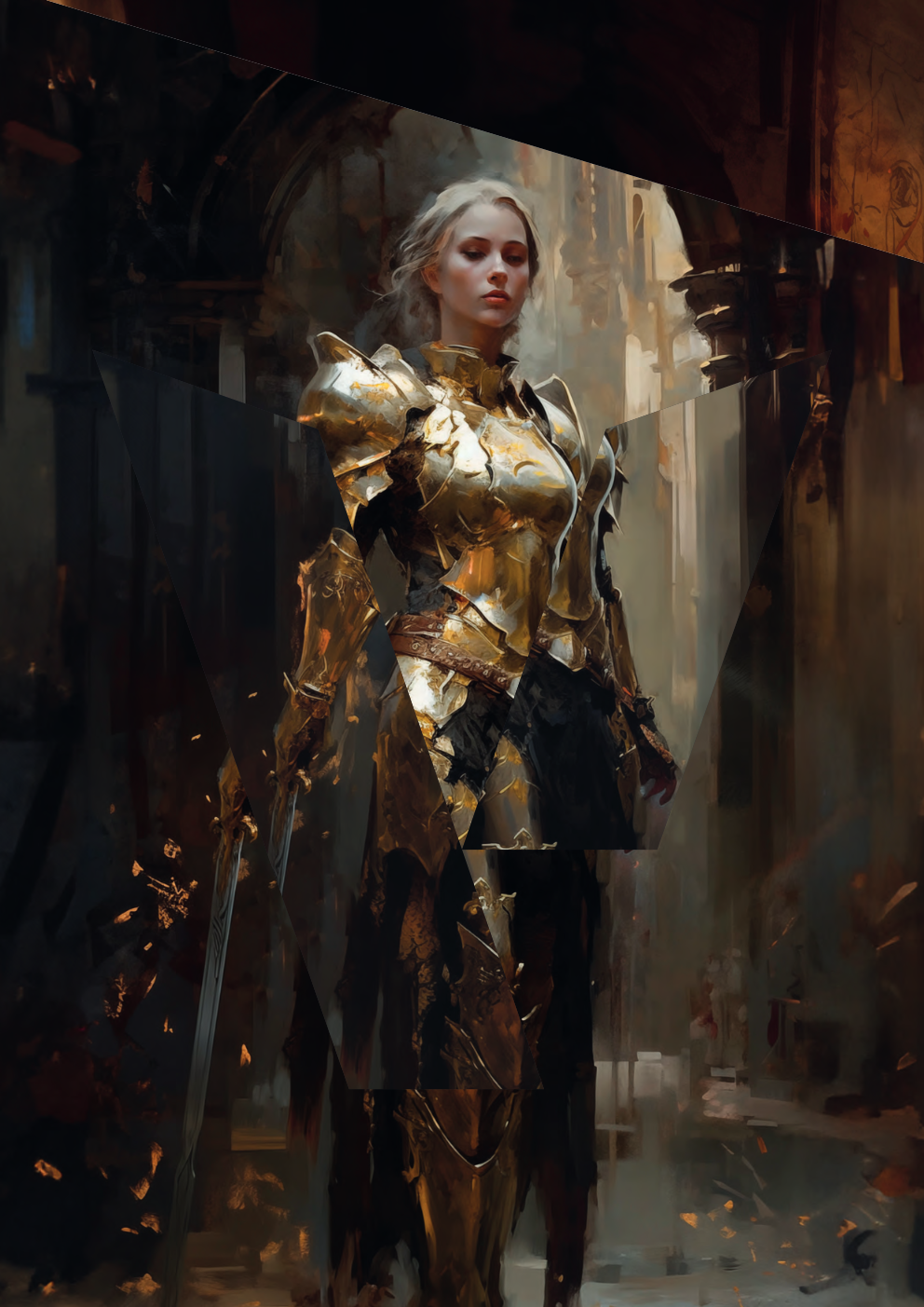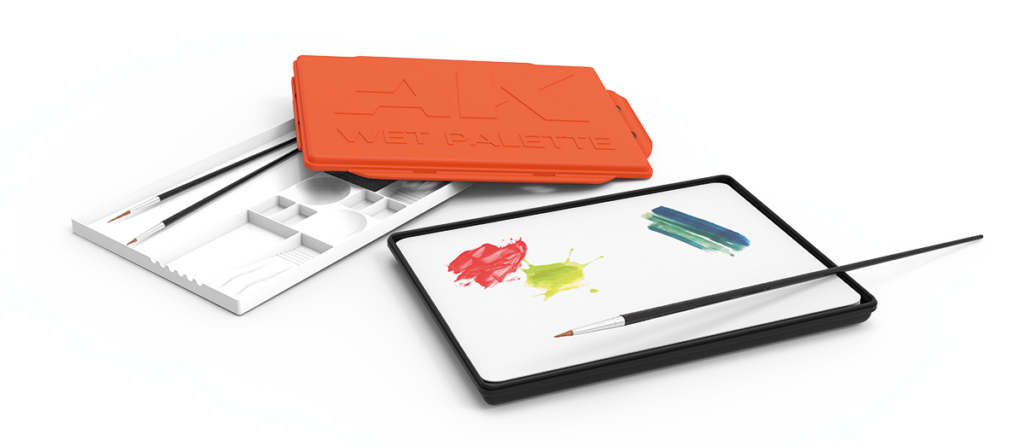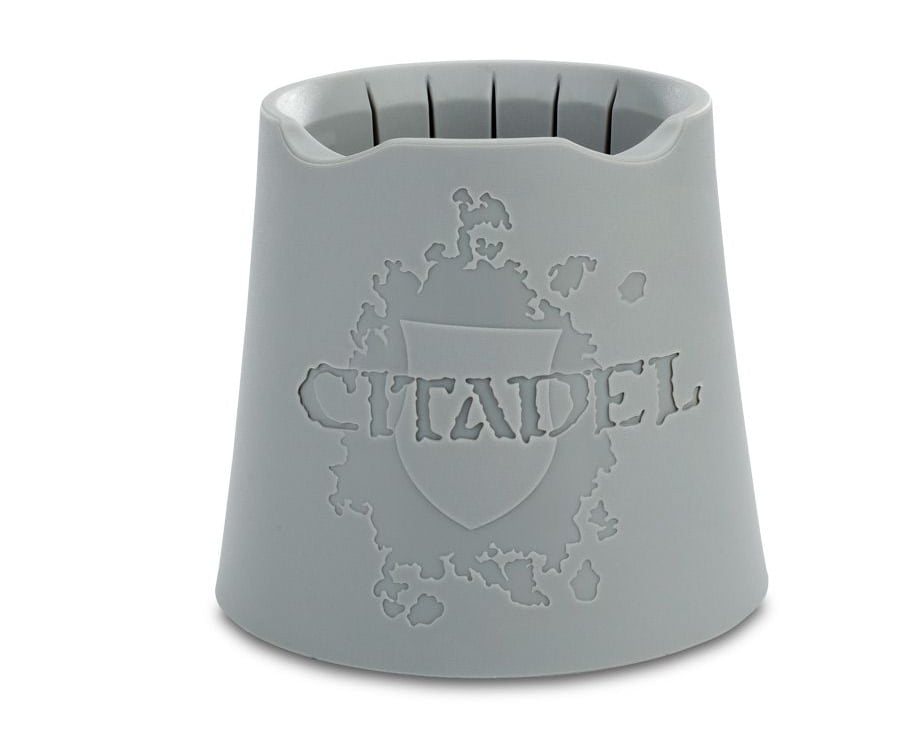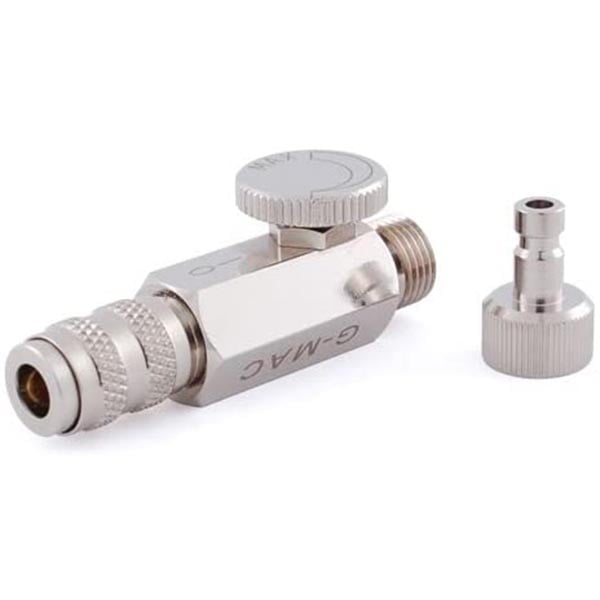Mastering Miniature Painting with Water-Based Acrylics
Unlock the full potential of water-based acrylic paints to bring your miniature figures to life! Whether you’re just starting or a seasoned hobbyist, this guide will equip you with the techniques, scientific insights, and pro tips needed to achieve flawless finishes. From airbrushing gradients to brush-painting fine details, dive into a world of vibrant colours and unparalleled precision.
Overview of Water-Based Acrylic Paints
Water-based acrylic paints are the go-to choice for miniature figure painters due to their non-toxic nature, ease of cleanup, and broad colour range. These paints excel at producing smooth blends, sharp highlights, and fine detail work, whether applied with an airbrush or traditional brushes.
Key Features
- Skill Level: Beginner to Advanced
- Performance: Minimal tip-dry when properly thinned, and excellent adhesion to properly prepared surfaces.
- Advantages: Fast-drying, compatible with a range of thinners and mediums, and capable of layering without obscuring fine sculpted details.

Understanding Acrylic Paint Types
Acrylic paints fall into two main categories:
- Water-Soluble Acrylics: Use water as the primary solvent. Pigments and resin are suspended in a water-based medium.
- Solvent-Based Acrylics: Use organic solvents (e.g., alcohol or lacquer thinner) to dissolve the resin, offering different handling characteristics.
Pro Tip: Always thoroughly mix acrylic paints before use to ensure even pigment distribution and consistent results.
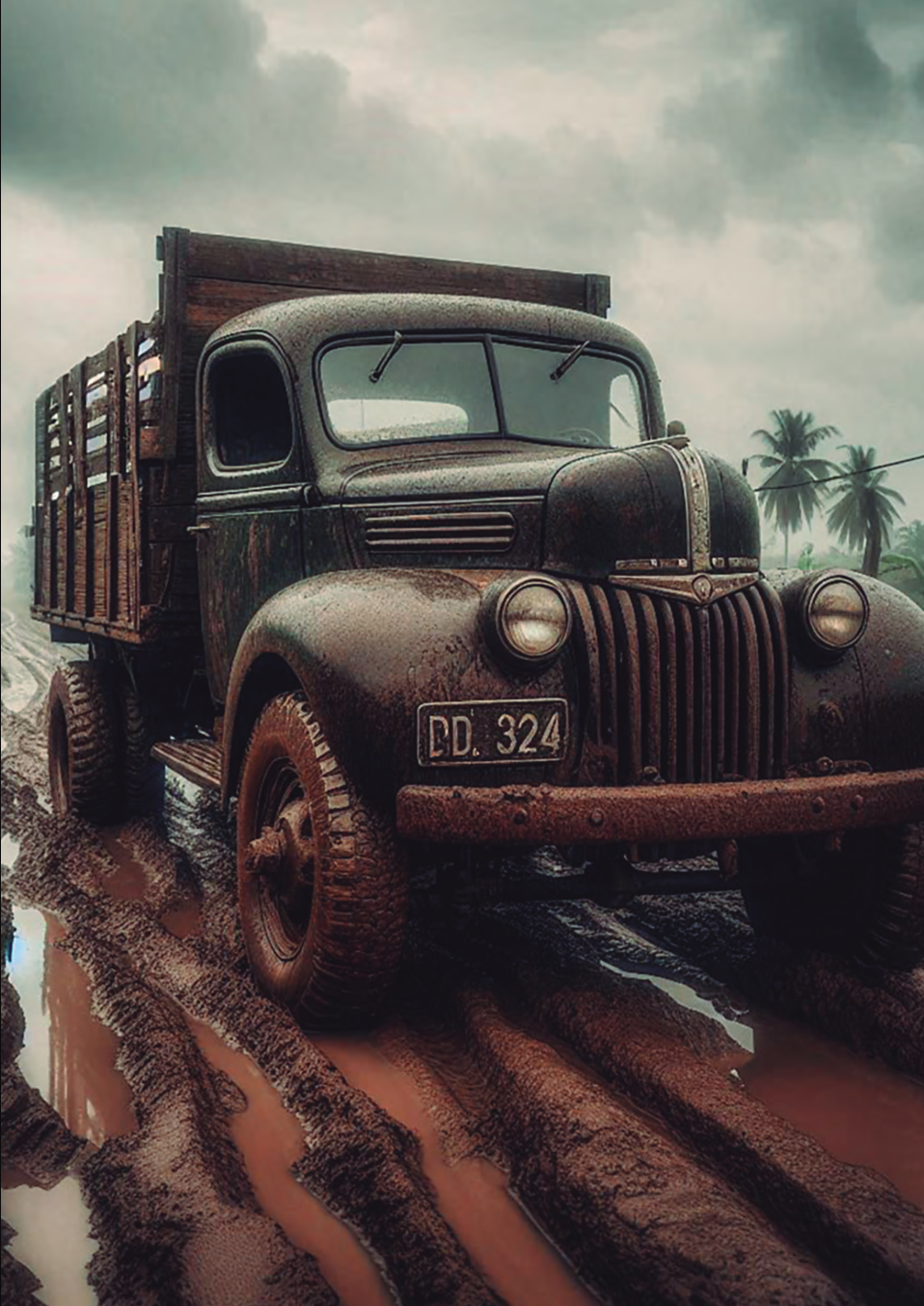
Airbrushing Water-Based Acrylics: Tips for Success
Avoiding Airbrush Paint Cup Accretion
Over time, water-based acrylics can form a semi-solid, gelatinous layer (accretion) on the walls of your airbrush paint cup. If not managed properly, this accumulation may break away and clog the nozzle.
Pro Tips:
- Mixing: Avoid stirring paint directly in the airbrush cup. This can dislodge dried particles and lead to clogs.
- Cleaning Between Refills: Rinse the paint cup with distilled water and back-flush the airbrush regularly to clear any residue.
- Prevention: Dump and clean the paint cup entirely between colour changes or extended use.
The Hidden Dangers of Mixing Paint with a Brush in Your Airbrush Cup
Mixing acrylic paint directly in the airbrush paint cup can cause several issues that may affect the painting process and final results:
1. Inconsistent Mixing
- When adding paint, thinner, or additives directly to the airbrush cup, it is difficult to achieve a thoroughly consistent mix. Inadequate mixing can lead to uneven spray patterns, colour variations, or clogging.
2. Risk of Contamination
- If the paint isn’t properly pre-mixed, undissolved pigments or chunks can get into the airbrush and clog the nozzle. This can also damage the internal components over time.
3. Wasted Paint
- When you mix directly in the cup, leftover paint cannot be stored for future use, leading to waste. Pre-mixing in a separate container allows for more precise amounts and storage of any extra paint.
4. Difficulty in Adjustments
- It’s harder to fine-tune the paint consistency (e.g., adding thinner or retarder) when the paint is already in the airbrush cup. Pre-mixing lets you adjust ratios more accurately before use.
5. Cleaning Challenges
- Any mixing mishap in the cup increases the risk of residue buildup, which can complicate cleaning. This is especially problematic with fast-drying acrylic paints that can harden quickly.
Best Practices:
- Pre-Mix in a Separate Container: Use a small cup or palette to mix paint, thinner, and additives before pouring into the airbrush cup.
- Strain the Mixture: Use a fine mesh paint strainer to remove any clumps or debris before adding the paint to the airbrush.
- Test Before Use: Spray a small amount on a test surface to ensure the mix sprays smoothly and achieves the desired consistency.
These steps ensure consistent, smooth results and help maintain the longevity of your airbrush.
Mixing paint directly in the airbrush cup with a paintbrush can also lead to a specific problem: paintbrush bristles breaking off. Here’s why this is a bad idea:
Bristles Causing Obstructions
- When you use a paintbrush to stir or mix paint in the airbrush cup, bristles can break off and get into the paint mixture. These tiny fragments are indissoluble and can travel through the airbrush system, eventually lodged in the nozzle.
- Once inside the nozzle, the bristles block airflow or paint flow, causing spattering, inconsistent spray patterns, or a complete blockage.
Why This Is Hard to Fix:
- Difficult to Remove: Unlike dried paint, bristle fragments won’t dissolve in cleaning solutions, making them harder to remove. You’ll likely need to disassemble the airbrush and manually extract the obstruction with fine tools like tweezers.
- Risk of Damage: Trying to clear a bristle obstruction can scratch or damage the delicate nozzle components, especially if force is applied.
Prevention Tips:
- Use Dedicated Mixing Tools: Instead of a paintbrush, use a plastic or metal stirrer to mix paint in a separate container.
- Strain the Paint: Even if you use a brush for mixing outside the airbrush, strain the mixture through a fine mesh filter before pouring it into the cup. This ensures no stray bristles enter the system.
- Inspect Brushes: If you must use a brush, ensure it’s in good condition with no loose or fraying bristles.
These precautions will save you the frustration of dealing with clogs and protect your airbrush from potential damage.
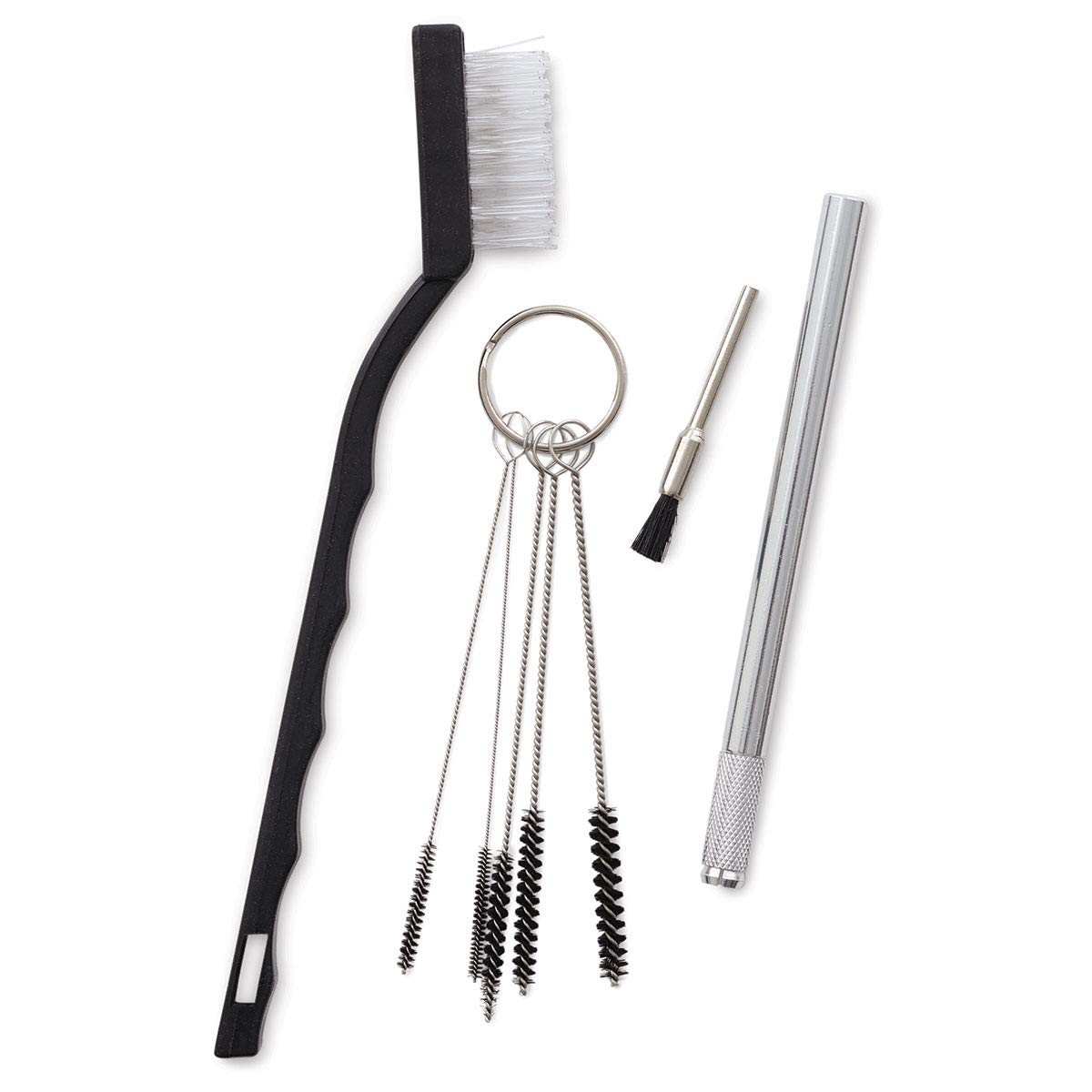
Maximizing Paint Performance
For Brushwork
- Use distilled water for thinning to maintain consistency and prevent impurities.
- Employ a wet palette to keep paint workable for longer periods.
- Experiment with retarders, flow aids, and glaze mediums to control drying time and flow characteristics.
For Airbrushing
- Use a high-quality acrylic paint thinner specifically formulated for water-based acrylics.
- Clean your airbrush thoroughly after use with a suitable acrylic cleaner or distilled water to prevent dried paint buildup.
Pro Tip: Avoid DIY thinners like isopropyl alcohol or lacquer thinners, as they may cause paint separation or damage to your airbrush.
Mastering Acrylics: The Essential Guide to Choosing the Right Thinners, Cleaners, and Retarders for Flawless Results
Using water-based acrylic proprietary thinners, cleaners, and retarders specifically designed for a brand’s paint is highly recommended when not using distilled water (dH₂O) for several reasons:
1. Compatibility with Paint Formulation
Proprietary thinners and cleaners are formulated to match the exact chemistry of the paint, ensuring optimal performance. Acrylic paints from different brands often vary in their resin types, pigment densities, and additives. Generic thinners or water may not provide the same compatibility, leading to issues such as:
- Clumping or separation: The wrong thinner can cause pigment and binder separation.
- Uneven consistency: Generic products might not maintain the intended viscosity or flow.
- Poor adhesion and durability: Mismatched thinner formulations can weaken the paint’s bond to the surface.
2. Superior Flow and Leveling
Brand-specific thinners often contain flow enhancers tailored to their paints, promoting smoother application. When compared to distilled water:
- Water dilutes but doesn’t improve flow as well as proprietary thinners.
- Thinners can retain or enhance binding agents while maintaining paint integrity.
3. Cleaners Are Formulated to Prevent Residual Damage
Proprietary cleaners effectively remove paint residues without damaging brushes, airbrush parts, or leaving residues that might affect future painting sessions. Generic or homemade cleaners might:
- Leave residue that reacts with new paint layers.
- Strip or degrade certain coatings or finishes on tools over time.
4. Why Use the Brand’s Paint Retarder
Retarders slow the drying time of acrylic paints, which is especially crucial for airbrushing or working in dry environments. Using the same brand retarder is advisable because:
- Tailored drying time: The proprietary retarder is calibrated for the paint’s resin system, preventing over-thinning or gumming.
- Colour integrity: Brand-specific retarders won’t alter the paint’s hue or consistency, which can sometimes happen with generic retarders.
- Prevents tip dry: Retarders from the same brand are tested to reduce nozzle drying issues when airbrushing.
When Not Using Distilled Water
Distilled water is often used because it lacks impurities that could negatively affect the paint (e.g., minerals or chlorine). However, when you opt for proprietary products:
- The chemical balance is maintained regardless of water quality.
- The risk of unwanted reactions from tap water impurities is mitigated.
Conclusion
Using brand-specific thinners, cleaners, and retarders ensures the paint performs as intended, minimizes issues, and maximizes the quality of your finish. While distilled water is a useful and cost-effective thinner, it lacks the specialized additives that proprietary products provide, making it a better choice for professional or precise work.
Master Blending and Detailing with a Wet Palette: The Game-Changer for Precision Painting
A wet palette is a must-have tool for figure painters, offering numerous advantages over a standard dry palette, particularly when working with acrylic paints. Below are the benefits of using a commercial wet palette compared to a DIY solution, and why every figure painter should consider using one:
Benefits of a Wet Palette
- Keeps Paints Wet and Workable Longer:
- The wet palette maintains paint hydration by keeping moisture in the palette, preventing acrylic paints from drying out too quickly.
- This is particularly important for blending, layering, and glazing techniques, where consistent paint consistency is crucial.
- Improves Paint Consistency:
- A wet palette ensures that your paint stays at the ideal consistency throughout your painting session, minimizing the need for constant water or medium adjustments.
- Enhances Paint Control:
- Wet palettes are perfect for thinning paints incrementally, giving you better control for fine details and smooth gradients.
- Saves Paint:
- The paint stays usable for hours or even days in a wet palette. If sealed properly, some commercial wet palettes can keep paint fresh for weeks, reducing waste.
Advantages of Commercial Wet Palettes
- Optimized Design:
- Commercial options are purpose-built, with airtight lids and durable components designed to minimize water evaporation and spillage.
- Many include high-quality sponges and specialized palette papers tailored for optimal moisture control.
- Convenience:
- Ready-to-use out of the box, a commercial wet palette saves time compared to setting up and maintaining a DIY version.
- No need to source and cut parchment paper, sponges, or containers.
- Consistency:
- Commercial palettes are tested for performance, ensuring consistent results. Depending on the materials used, DIY options might suffer from uneven hydration or leakage.
- Portability:
- Many commercial wet palettes are compact, sturdy, and easy to transport without risking leaks or spills—ideal for hobbyists who travel or paint at clubs or competitions.
- Enhanced Features:
- Some commercial wet palettes include advanced features like accessory trays, paint wells, or reusable membranes, which aren’t easily replicated in DIY solutions.
Why Every Figure Painter Needs One
- Encourages Better Painting Habits:
- A wet palette promotes smoother blending, enhances colour mixing, and supports advanced techniques, improving the quality of your work.
- Reduces Frustration:
- No more dried-out paint mid-session. It makes painting more enjoyable and less wasteful, especially during long sessions.
- Saves Time and Effort:
- Instead of constantly re-mixing dried colours, you can focus on painting, improving productivity and consistency across projects.
- Longevity for Miniatures:
- Properly thinned and consistent paint leads to smoother application, avoiding clumpy or uneven finishes that could obscure fine details on your figures.
- Increases Efficiency in Layering and Glazing:
- The wet palette is indispensable for creating smooth, seamless transitions, making it easier to achieve professional-looking results.
DIY vs. Commercial Wet Palette
| Feature | DIY Wet Palette | Commercial Wet Palette |
|---|---|---|
| Cost | Low, made from household items | Moderate to high, depending on the brand |
| Durability | Varies, often less sturdy | High-quality materials, built to last |
| Performance | Inconsistent, depends on materials | Consistent and optimized for hobby use |
| Ease of Use | Requires setup and experimentation | Ready to use with minimal fuss |
| Portability | Limited by container quality | Compact and leak-proof designs available |
While a DIY wet palette can be an affordable entry point, the reliability, performance, and convenience of a commercial wet palette make it a worthwhile investment for any serious figure painter. It’s a tool that pays for itself by enhancing your painting experience and results.
Technical and Chemical Insights: The Importance of Distilled Water
Distilled water is a crucial component for thinning water-based acrylics and cleaning brushes. Unlike tap water, distilled water is free of impurities that can interfere with paint performance.
Why Distilled Water Matters
- Prevents Contamination: Tap water often contains minerals and additives (e.g., chlorine) that can cause paint to clump or dry unevenly.
- Ensures Consistent Thinning: Distilled water creates a predictable, even consistency for smooth application.
- Enhances Paint Flow: Free from impurities, distilled water reduces surface tension, promoting smoother strokes and layers.
- Brush Longevity: Avoids mineral buildup on bristles, extending the life of your brushes.
Pro Tip: When using a wet palette, distilled water helps prevent mould and bacterial growth.
Wet Palette Scientific Insight: Copper as a Mold Inhibitor
Copper objects, such as wire or corner weights, can be valuable tools for preventing mould and bacterial growth in your painting setup. Copper’s natural antimicrobial properties make it a great addition to wet palettes or water reservoirs.
How Copper Works
- Releases Antimicrobial Ions: Copper ions disrupt the cell walls of bacteria and mould, preventing their growth.
- Generates Reactive Oxygen Species (ROS): Copper catalyzes the production of ROS, which damages microbial DNA and proteins.
- Inhibits Reproduction: Copper binds to essential microbial enzymes, halting replication and survival.
Practical Applications:
- Place small pieces of pure copper wire or coins in your wet palette to maintain a clean environment.
- Clean and polish copper items periodically to maintain their effectiveness.
Pro Tip: Combine copper with regular cleaning practices and distilled water for the best results.
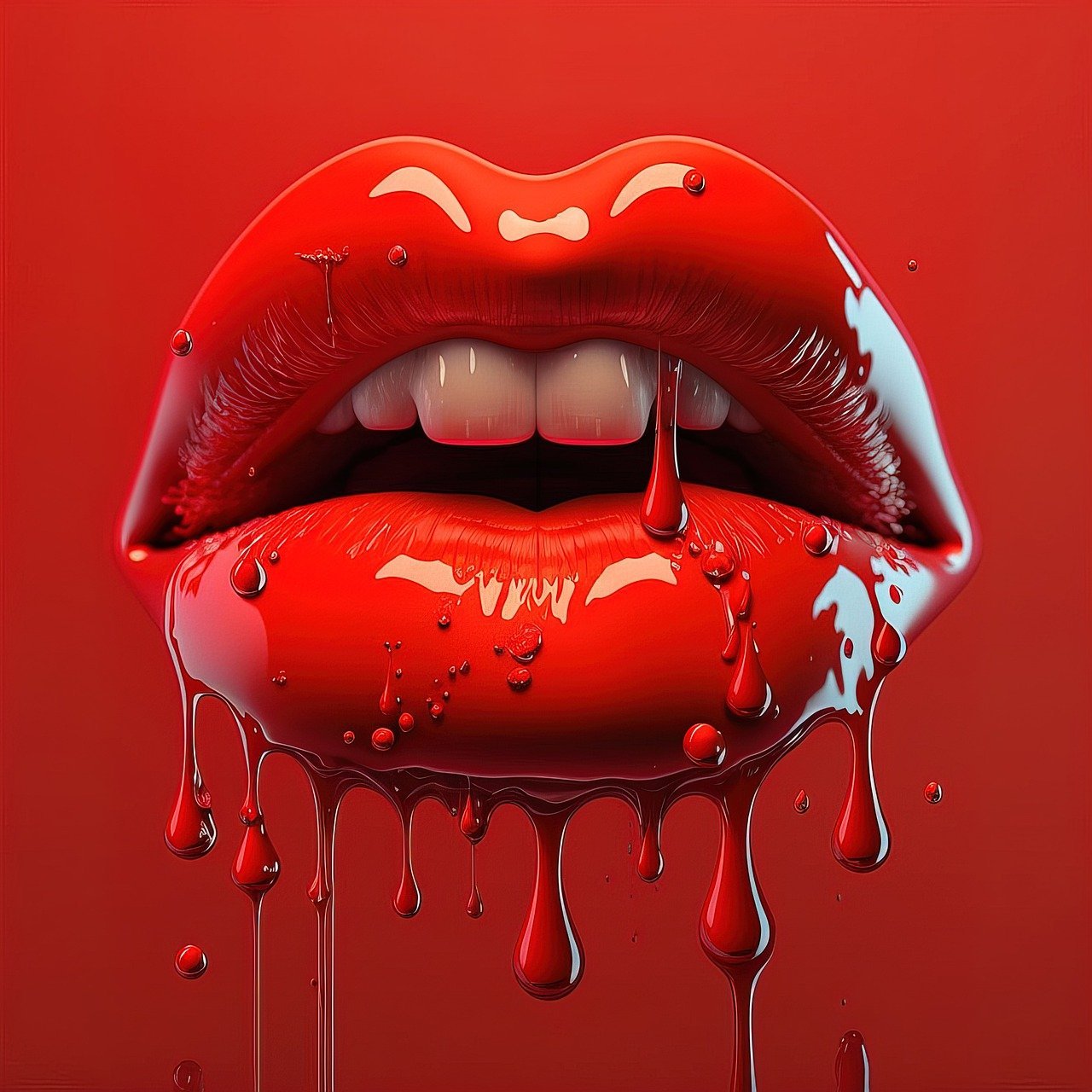
Pitfalls of Using Your Lips to Shape Brush Tips
A common habit among miniature painters is using their lips to shape brush tips into a sharp point. While this might seem convenient, it poses several health and technical risks, especially when working with water-based acrylics from a wet palette.
Why It’s Risky
- Health Hazards: Even though water-based acrylics are labelled non-toxic, pigments and additives can still cause irritation or harm if ingested in small amounts over time.
- Contamination: Saliva introduces bacteria, enzymes, and other contaminants to the brush, which can compromise the paint’s consistency and longevity.
- Paint Degradation: Moisture from saliva can react unpredictably with paint, especially when thinned on a wet palette, leading to inconsistent application.
- Hygiene Issues: Repeatedly placing a paint-laden brush near your mouth increases the risk of accidentally ingesting paint or spreading germs.
Better Alternatives
- Use a damp paper towel or sponge to gently reshape the brush tip.
- Employ a brush shaper or restorer for precise control.
- Dip the brush lightly into clean distilled water to recondition the tip without contamination.
Pro Tip: Keeping your brushes clean and well-maintained eliminates the need for this practice entirely, promoting both better health and superior painting results.
La Citadel Water Pot, designed by Games Workshop, is a popular choice for figure painters due to its thoughtful design tailored for miniature painting. Here are its key features and benefits:
Fonctionnalités
- Grooved Brush Rest
- Built-in grooves along the rim allow brushes to rest without their bristles touching the surface, preventing damage and ensuring proper drying alignment.
- Textured Brush Cleaning Area
- The bottom features ridges or textures that help clean paint off bristles effectively, particularly from deep within the brush, without excessive scrubbing.
- Wide, Stable Base
- Its low-profile and wide base minimize the risk of tipping over, reducing potential spills that could ruin your workspace or model.
- Large Capacity
- It holds a significant amount of water, allowing for prolonged use without frequent refills, even when using multiple colors or cleaning brushes after metallic or wash paints.
- Sturdy, Durable Plastic
- Made from robust materials, it withstands long-term use and accidental knocks.
- Compact Design
- Specifically sized to fit well on a cluttered workstation, making it practical for use during detailed painting sessions.
Benefits
- Brush Longevity
- The textured cleaning area and brush rest promote better care for your brushes, extending their lifespan and maintaining bristle quality for precise detailing.
- Improved Workspace Organization
- With dedicated grooves for resting brushes and a stable design, it helps maintain a cleaner, more organized painting area.
- Efficient Cleaning
- The ridged base enables quick removal of paint, saving time and reducing frustration when switching colours or cleaning post-session.
- Minimal Mess and Spills
- Its spill-resistant design reduces accidents that could damage models or delicate parts of your workstation.
- Professional Appearance
- The sleek, purpose-built design adds to the aesthetic of a professional painter’s toolkit, complementing other Citadel products.
- Compatibility with the Hobby
- It’s tailored to the needs of figure painters, particularly those working on Warhammer or similar miniatures, making it a thoughtful addition for enthusiasts.
💡 For figure painters who value efficiency, brush care, and maintaining a clean workspace, the Citadel Water Pot is a functional and worthwhile investment.
Advanced Techniques for Miniature Painting
Gradient Shading and Blending
Water-based acrylics excel at creating smooth gradients and transitions:
- Apply thin, overlapping coats to gradually build opacity.
- Use techniques like glazing and feathering for subtle shifts in tone.
- Test colour transitions on a spare model or spray sheet to perfect your technique.
Thinning Ratios
- General Colors: 1:1 to 7:3 (thinner:paint)
- Metallics: 8:2 (thinner: paint)
- Always add any retarders or mediums before thinning.
Pro Tip: Use drop-counting (20 drops = 1 ml) to achieve consistent mixes for predictable results.
Air Pressure Settings
- Set your airbrush to 1.5 bar (22 psi) for optimal control.
- Use a MAC Valve to fine-tune airflow for detailed work.
Pro Tip: Adjust your compressor pressure while running to avoid false readings.
Paint Application Techniques
Light Overlapping Coats
Apply multiple light coats with at least 50% overlap to avoid streaks or uneven coverage. Stop painting as the desired opacity is achieved to preserve fine details.
Layering Other Paint Types
Water-based acrylics form a durable surface that can handle masking and layering with lacquers or enamels when properly applied:
- Clean the surface with 70% isopropyl alcohol to remove oils and contaminants.
- Prime and paint in controlled layers, allowing sufficient drying time.
Pro Tip: Dust-free surfaces ensure superior adhesion and finish.
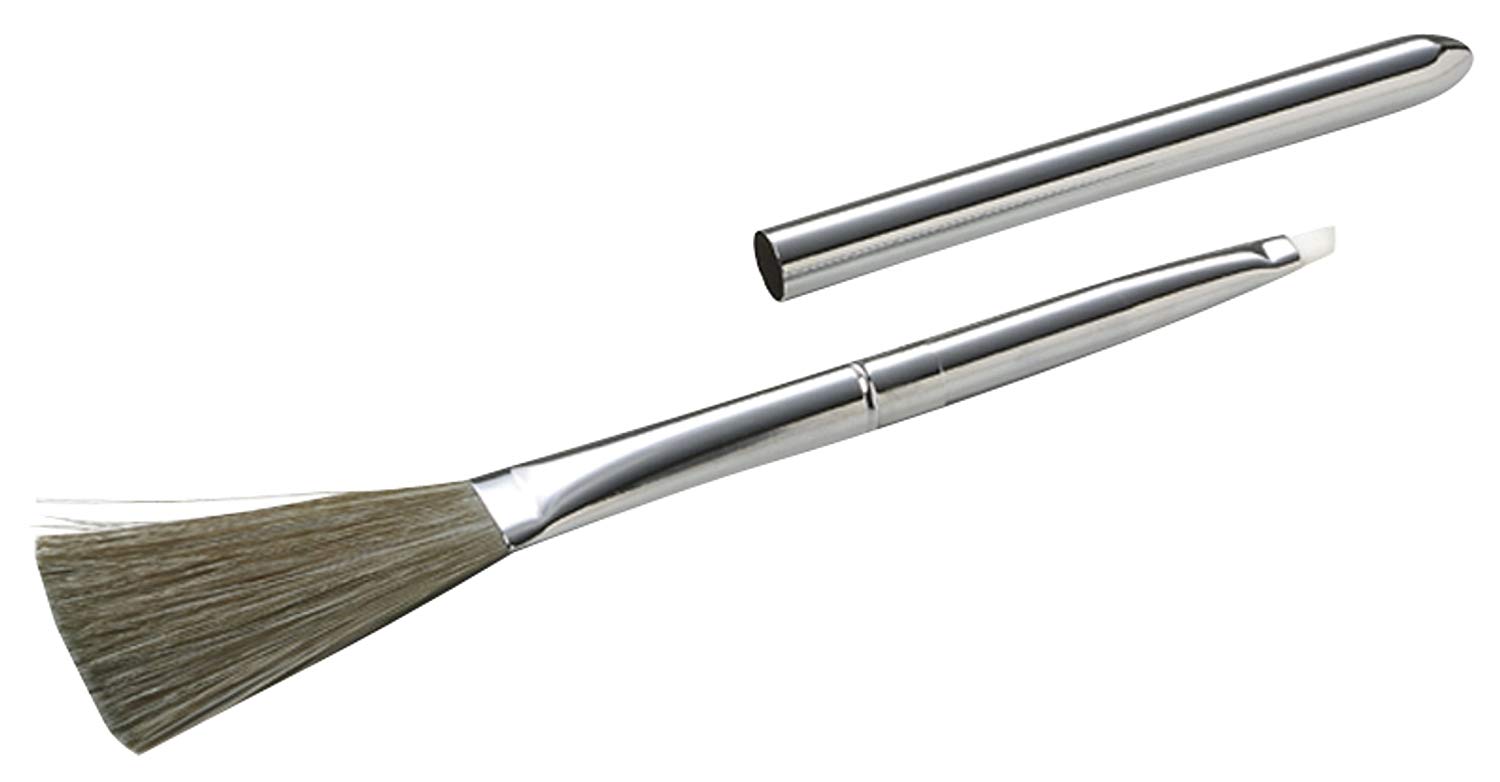

By following these guidelines, you’ll unlock the full potential of water-based acrylic paints for miniature figure painting. With practice and attention to detail, your models will showcase smooth gradients, vibrant colours, and crisp highlights worthy of display.
Key Takeaways
- Why Water-Based Acrylics?
- Non-toxic, easy cleanup, wide colour range for smooth blends and crisp details.
- Fast-drying with excellent adhesion when surfaces are properly prepped.
- Airbrushing Best Practices
- Pre-mix Paint Outside the Cup: Use a separate container and strain to avoid clogs, contamination, and wasted paint.
- Prevent Accretion: Rinse and back-flush with distilled water between refills; deep-clean the cup between colour changes.
- Avoid Brush Mixing in Cup: Prevent bristle breakage and gelatinous buildup by using dedicated stirrers.
- Brushwork Essentials
- Thin with distilled water or brand-specific thinners; employ a wet palette to keep paints workable.
- Use retarders and flow aids sparingly for controlled drying and tip-dry prevention.
- Shape tips with a damp paper towel or brush shaper—never with your lips—to maintain hygiene and paint integrity.
- Choosing the Right Additives
- Proprietary Thinners/Cleaners/Retarders: Match the paint’s chemistry for optimal flow, adhesion, and nozzle health.
- Distilled Water: Use for consistent thinning, impurity-free flow, and brush longevity.
- Wet Palette Advantages
- Keeps paint hydrated for hours or days—ideal for blending, glazing, and layering.
- Commercial palettes offer airtight lids, quality sponges, and portability; DIY versions save cost but can be inconsistent.
- Add a small copper piece to inhibit mould growth.
- Tool Spotlight: Citadel Water Pot 60-07
- Grooved brush rests, textured cleaning base, wide stable design, and large capacity make it a workhorse for model painters.
- Advanced Techniques
- Gradient Shading: Build thin overlapping coats; use glazing and feathering.
- Thinning Ratios: General 1:1–7:3 thinner:paint; metallics 8:2.
- Air Pressure: Start at ~1.5 bar (22 psi) and fine-tune with a MAC valve.
- Layering: Apply light coats (≥50% overlap); prime and clean surfaces when switching to lacquers or enamels.
With these core principles—proper mixing and thinning, dedicated cleaning routines, and the right tools—you’ll achieve vibrant, seamless finishes and preserve the fine details of your miniatures. Happy painting!

James Wooldridge
James is a dedicated scale modeller, researcher, and amateur historian whose expertise elevates every project he undertakes. Specializing in super detailing and the application of authentic colour schemes, his scholarly articles have been published in esteemed platforms such as Scalemates and have been recognized through inclusion in Google Featured Snippets. As an active contributor to a distinguished Facebook group, he disseminates innovative techniques and forward-thinking ideas within a vibrant community of enthusiasts. Moreover, James presents informative video content for a prominent Scale Modelling Club, further demonstrating his commitment to advancing the craft. His leadership is underscored by his role as a founding executive member of both KSM–IPMS and Kawartha Scale Modellers, thereby solidifying his influential position within the scale modelling field..💡📏 📐📱🎬 📷 🎥

